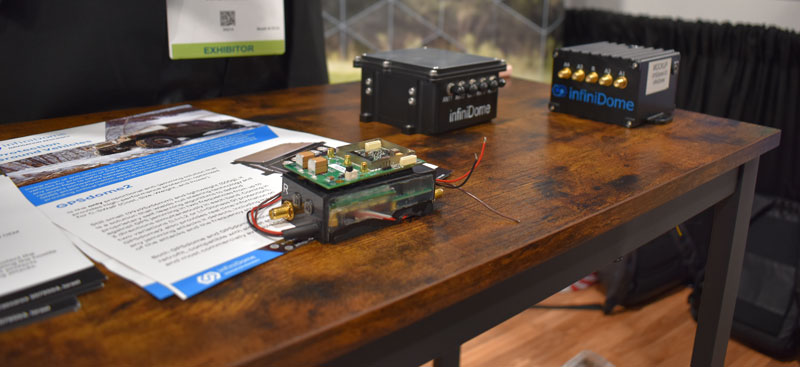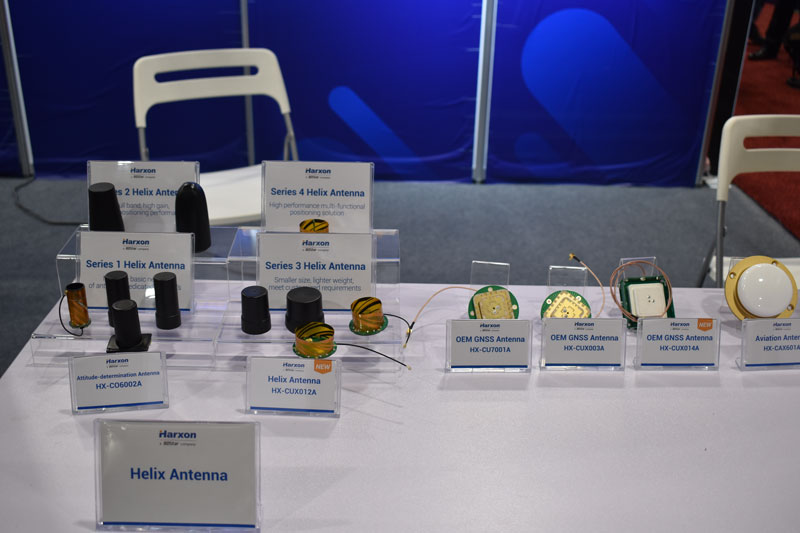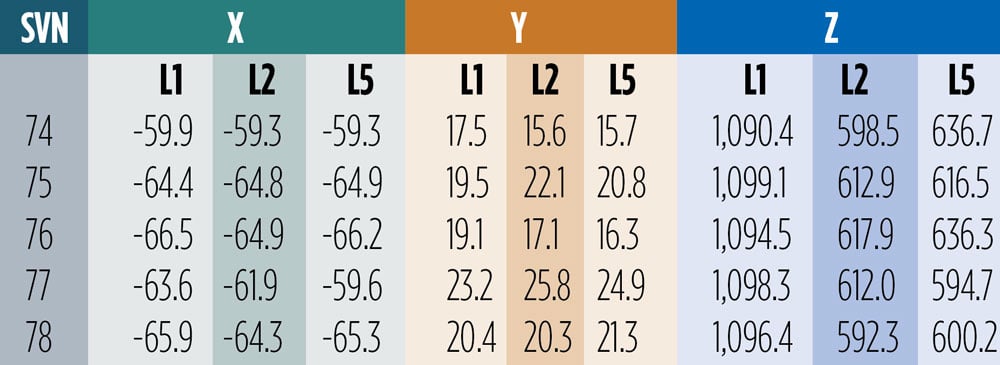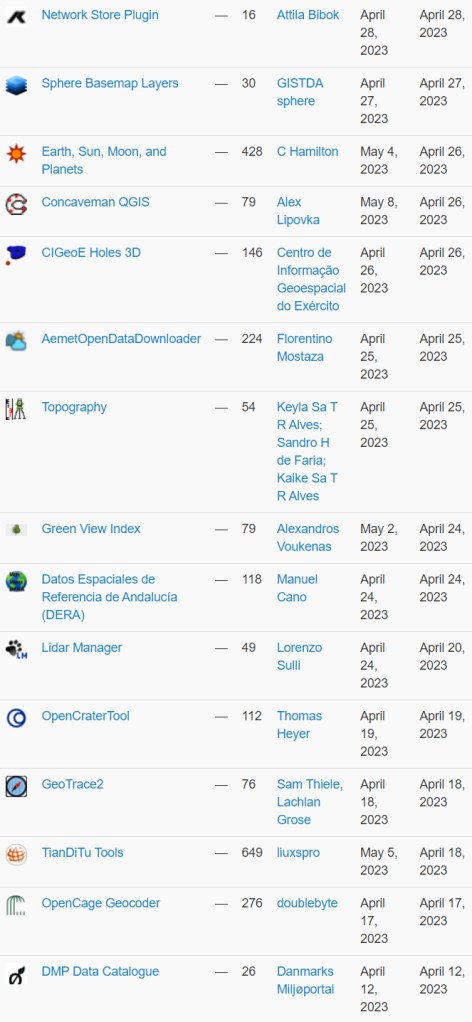This month’s column is an irresistible departure from sensible, autonomous UAVs and artificial intelligence (AI) news. We’re taking a small leap into who knows where.
How many of GPS World’s readers have interest in sci-fi, or at least are somewhat interested in the weird and wonderful stuff that shows up on some TV “reality” shows? Or maybe have a passing interest in the U.S. Navy’s Unidentified Aerial Phenomena Task Force, the U.S. Congress’s interest in unidentified flying objects (UFOs) and now the Airborne Object Identification and Management Synchronization Group (AOIMSG) of the Department of Defense (DOD)?
Yes, this a short meandering around what we now apparently call unidentified aerial phenomena (UAP), but mostly because one of those reality shows made use of UAVs in an effort to find out how or why UAPs may be concentrated in a particular location. That’s a location in northeastern Utah where Robert Bigelow may have previously spent millions of dollars of the Pentagon’s money conducting a study on UFOs. You may have heard of Bigelow Aerospace and their efforts to build inflatable orbital space stations. Bigelow was apparently intent on finding a logical answer to the UFO phenomenon and may have been involved for a while in the gathering of UFO sighting data on behalf of the Federal Aviation Administration (FAA).
The UFO/UAP flame has apparently been carried since around 2020 by a “scientific team” that puts out a regular TV program called “The Secret of Skinwalker Ranch,” which is broadcast on the History channel. There is a side of this program that also tries to deal with apparent paranormal “giant-red-eyed-wolf” activity at this location, but for today’s story, we are focusing on slightly more plausible, significant scientific efforts to identify UAP phenomena, not the less likely investigation of worm-holes at a site on the ranch (there goes all credibility, but please keep reading).
The cast of this show includes lead investigator, actor/scientist, Dr. Travis Taylor, who has two doctorates and three master’s degrees in engineering, physics and astronomy. He’s been involved with and has authored several articles in scientific journals, as well as nonfiction books and novels, appeared in TV presentations and worked for NASA and DOD on various programs.
The instruments of choice for this effort include forward-looking infra-red (FLIR), hand-held and UAV-mounted thermal and HD video cameras, wide-band frequency synthesizers and monitors, lidar scanners, and a data acquisition and display system that collects and analyzes all of the outputs of these systems, and GPS data. So, somewhat serious tech.
There are two areas on the ranch where UAP activity has been observed and has even been apparently stimulated by launching short-range rockets: a triangular intersection of three pathways or roads — referred to not surprisingly as the “Triangle” — and a field some distance off to the east, both at the foot of a mesa or flat-topped, raised area of land. As a side investigation, there were earlier efforts to determine what might lay buried inside the mesa, via video poked inside small caves, and then a horizontal drilling rig that apparently turned up exotic material similar to heat-shield re-entry coatings on spacecraft. This may be another diversion from the true search for UAPs, but then again maybe not.
Finally, some UAV involvement — a UAV aerial survey of the whole 512 acres of the Skinwalker site was carried out collecting data over a seven day period by VCTO Labs in Washington state with GPS RTK, acquiring the necessary 1 cm accuracy for a 3D model created by PIX4Dmatic processing.
About 32,000 images were captured and the resulting 3D model is now used as the geolocation truth model for the site. Nevertheless, surveying efforts over the last three years may have been hampered by the loss of three UAVs, thought to be due to some form of electromagnetic interference that brought them down.
When the team focused on the Triangle, there seemed to be one “anomaly” of some description at the center of the area at about 2,500 ft. So, to stimulate the anomaly or to create some sort of reaction, high density lasers were located at the corners and focused at about 2,500 ft. With these beams highlighting the suspect area, a large rocket was fired straight up toward the focus point. After a launchpad explosion that destroyed the first rocket, another was hustled into position, and launched successfully. At about 1,000 ft, the rocket was diverted some 30° off to the side, with no apparent high-level winds or other apparent influence, perhaps from some sort of guidance error.
As a follow-up and to gain more insight into another anomaly found flying a hand-held lidar in a helicopter at 300 ft above the triangle, it was decided to bring in a UAV lightshow by Sky Elements Drone Shows — an outfit based in Fort Worth, Texas, associated with SPH Engineering in Riga, Latvia. They run a heap of UAV shows in the United States and ran a recent 600-UAV show for the coronation in the United Kingdom and claim to have worked in 75 countries around the world. The object of the UAV show at Skinwalker was to see whether any “anomalies” would affect UAV guidance, and obviously many lighted UAVs in formation at altitude would make for good TV. The show uses a GPS RTK set-up, and the drones are guided by u-blox M8P GPS/GLONASS GNSS receivers.
So, with a rocket launched and the 1.6 GHz signal detected — it may have also been rebroadcast — the Sky Elements UAVs were powered up, lit up, lifted off and flown to altitude above the Triangle. All seemed well with all 200 lighted UAVs hovering in the night sky until a couple of UAVs “disconnected” — presumably from the 5 GHz Wi-Fi control channel, which has a secondary 915 MHz back-up. Then pandemonium erupted as the whole UAV display collapsed from the middle section, and the UAVs returned to the ground. To be sure, the 200 lighted UAVs were spun up again, flown up to altitude, and after a few minutes, the drop-out happened again as the fleet of UAVs returned to the ground.
The UAV show was moved to the notorious East Field and everything was repeated. However, other than what looked like a timing error as one UAV left early and was joined at altitude by the rest of the two hundred UAVs, no anomalies disturbed the formation.
The Skinwalker research team had instrumented the four corner UAVs of the display with a separate GPS receiver (and radio link?), so that their recorded position data could be used for subsequent analysis. Therefore, when the team huddled round the replay of the Triangle show in their control room, they had access to the UAVs’ location data from all the UAVs and the GPS location information from the four corners. Unfortunately (for our purposes) or fortunately (for the team), as the video/data analysis ran, a UAP was noticed flying over the proceedings. The image was clear enough for Travis Taylor to come up with a drawing of it, similar to a foreshortened dumb-bell.
Other than noting that the GPS altitude data for the UAVs that landed had been recorded as negative, or below the surface of the ground, the drone show analysis was put aside for extensive review of the UAP video — after all, the whole effort is prioritized to stimulate and analyze UAP anomalies, right?
So, what could we make of all this? Certainly, for me, the presence of the 1.6 GHz signal seems to be an indication that the UAVs’ GPS receivers and the GPS RTK reference receiver may have been jammed at L1. However, for the UAVs to return to their ground location, they may be programmed to do so when GPS guidance is lost.
So, why didn’t they behave the same at the East Field? Perhaps the jamming signal was localized at or near the Triangle? So, the next step would be to determine where this 1.6 GHZ signal originates. If it is re-broadcast by the team it might be a good idea not to do so. The u-blox M8P receiver includes GLONASS, but it doesn’t sound like there was associated RTK for GLONASS, so when GPS RTK was lost, GLONASS positioning alone may not have been able to meet the requirements of formation flight. So, the UAVs probably default to return-to-base logic, even though they may dead-recon back to the ground?
I asked my friends in Latvia whether they could confirm this layman’s hypothesis, but they needed the logs stored on the UAVs from those shows, and they were not apparently downloaded. It seems like there might be an opportunity for a re-run with post-show access to the individual UAV logs.
What about the analysis of the apparent UAP? Now, I must go watch more Skinwalker Ranch shows.






















